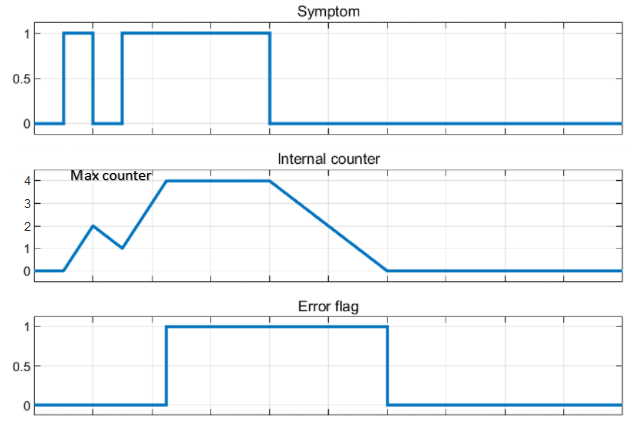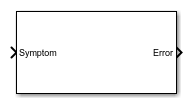Fault Qualification
Libraries:
Simscape /
Battery /
BMS /
Protection
Description
This block implements a fault qualification algorithm. The input and output ports are logic
signals and you can specify them as scalars or vectors. To prevent error
disqualification, set the Disqualification time parameter to
0.
This block supports single-precision and double-precision floating-point simulation.
Note
To enable inherited single-precision floating-point simulation, the data type of all
inputs and parameters, except for the Sample time (-1 for
inherited) parameter, must be single.
You can switch between continuous and discrete implementations of the block by using the
Sample time (-1 for inherited) parameter. To configure the
block for continuous time, set the Sample time (-1 for
inherited) parameter to 0. To configure the block for
discrete time, set the Sample time (-1 for inherited)
parameter to a positive, nonzero value, or to -1 to inherit the
sample time from an upstream block.
Note
Continuous-time implementation of this block works only in a double-precision floating-point simulation. If you provide single-precision floating-point parameters and inputs, this block casts them to double-precision floating-point values to prevent errors.
This diagram shows the structure of the block:

Equations
This figure shows how the internal counter and the Error output port of this block work:

The fault qualification takes a symptom as input. The input is 1 when a
symptom is present, such as an overvoltage error, and 0 when the
symptom is not present. When the symptom is present, the block increments an
internal counter. When the counter reaches the maximum value corresponding to the
desired qualification time, the output port is 1.
You must provide a disqualification time greater than 0 to allow
disqualification. When the disqualification time is not 0 and the
symptom is not present, the block decrements the counter until it reaches
0. When the counter is 0, the output port
is 0.
Examples
Assumptions and Limitations
For vectorized inputs and outputs, this block assumes that the qualification and disqualification times are the same for all input symptoms. (since R2025a)

